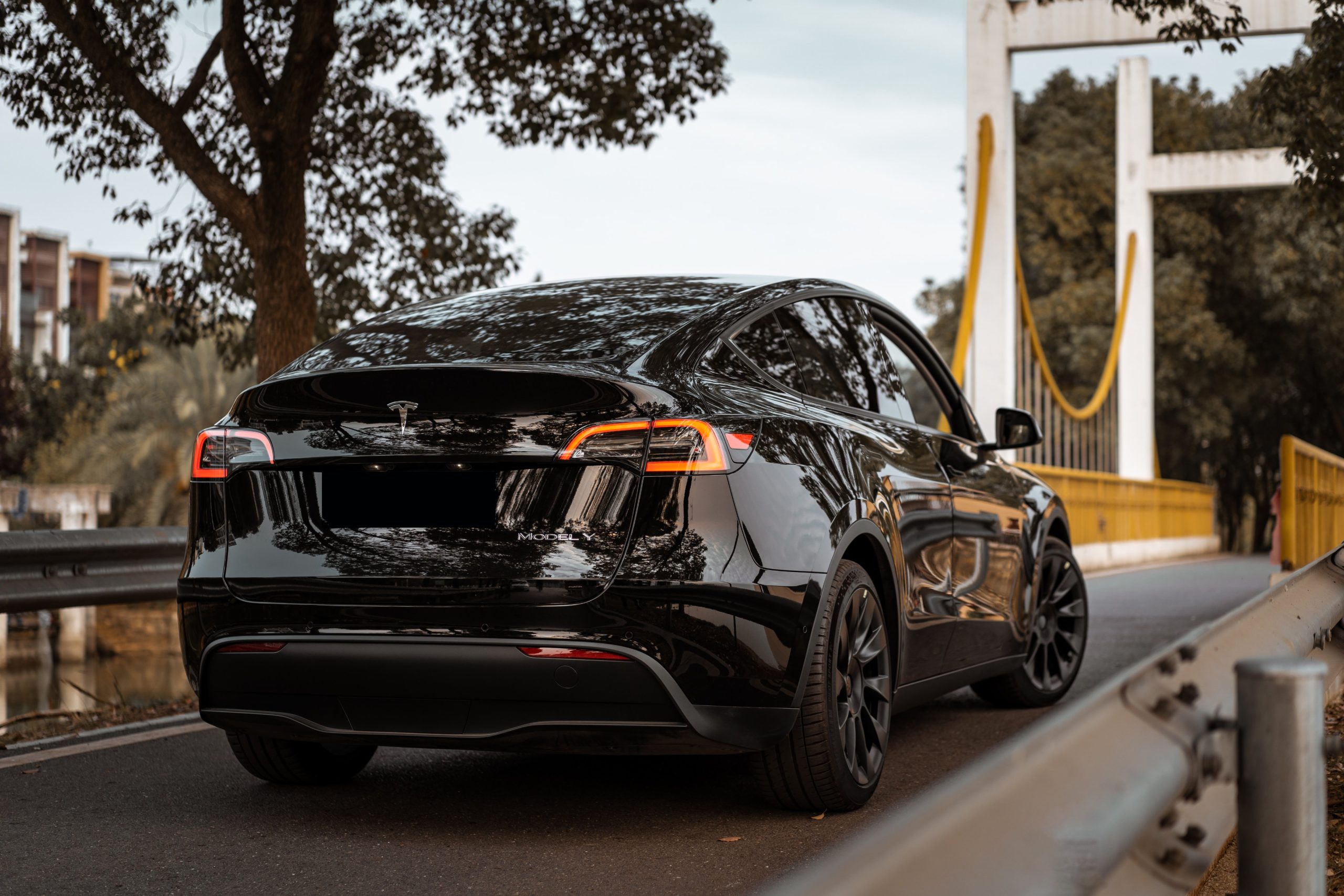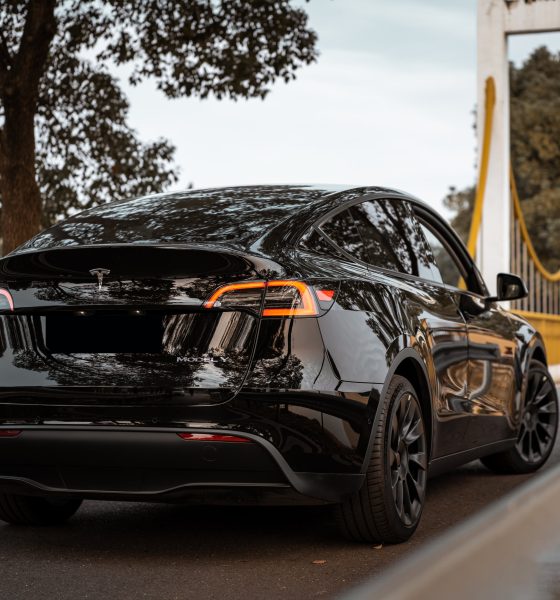

News
EVs like Tesla are cutting pollution levels and reducing health problems: study
Electric vehicles are pretty much inevitable at this point, with carmakers, led by all-EV disruptors such as Tesla, transitioning their respective fleets to electric. Yet despite this, there are still a lot of skeptics who argue that electric vehicles do not really do anything useful for the environment.
A study from the Keck School of Medicine of the University of Southern California has provided some real-world observations about electric vehicles and how they positively impact the environment. The researchers’ study leveraged publicly available datasets to analyze a “natural experiment” occurring in California as residents transitioned to electric cars.
The study analyzed data on total zero-emission vehicle (ZEV) registrations, air pollution levels, and asthma-related emergency room visits throughout California from 2013 to 2019. The researchers found that as ZEV adoption rates increased within a particular zip code, the corresponding levels of local air pollution and asthma-related emergency room visits in the areas also decreased.
Erika Garcia, PhD, MPH, an assistant professor of population and public health sciences at the Keck School of Medicine and the study’s lead author, noted that the study shows that changes made at the local level could already improve the health of a community. This is a notable victory for sustainable transportation and the fight against climate change.
“When we think about the actions related to climate change, often it’s on a global level. But the idea that changes being made at the local level can improve the health of your own community could be a powerful message to the public and to policy makers,” Dr. Garcia said.
The study’s findings were outlined in an Abstract published in the journal Science of the Total Environment. A section of the Abstract can be viewed below.
“We conducted a zip code-level ecologic study relating changes in annual number of ZEVs (nZEV) per 1000 population from 2013 to 2019 to: (i) annual average monitored nitrogen dioxide (NO2) concentrations and (ii) annual age-adjusted asthma-related emergency department (ED) visit rates, while considering educational attainment.
“The average nZEV increased from 1.4 per 1000 population in 2013 (standard deviation [SD]: 2.1) to 14.7 per 1000 in 2019 (SD: 14.7). ZEV adoption was considerably slower in zip codes with lower educational attainment (p < 0.0001). A within-zip code increase of 20 ZEVs per 1000 was associated with a − 0.41 ppb change in annual average NO2 (95 % confidence interval [CI]:-1.12, 0.29) in an adjusted model. A within-zip code increase of 20 ZEVs per 1000 population was associated with a 3.2 % decrease in annual age-adjusted rate of asthma-related ED visits (95 % CI:-5.4, −0.9),” the researchers noted in the study’s Abstract.
The study also showed that there is a significant “adoption gap” in low-resource zip codes when it comes to the adoption of zero-emission vehicles (ZEVs). The research team found that while the number of total ZEVs increased over time in California, the rate of adoption was much slower in low-resource areas. This disparity highlights an opportunity to address environmental justice in communities that are disproportionately impacted by pollution and its associated health issues.
A link to the researchers’ study can be found here.
Don’t hesitate to contact us with news tips. Just send a message to simon@teslarati.com to give us a heads up.

News
Tesla FSD fleet is nearing 7 billion total miles, including 2.5 billion city miles
As can be seen on Tesla’s official FSD webpage, vehicles equipped with the system have now navigated over 6.99 billion miles.

Tesla’s Full Self-Driving (Supervised) fleet is closing in on almost 7 billion total miles driven, as per data posted by the company on its official FSD webpage.
These figures hint at the massive scale of data fueling Tesla’s rapid FSD improvements, which have been quite notable as of late.
FSD mileage milestones
As can be seen on Tesla’s official FSD webpage, vehicles equipped with the system have now navigated over 6.99 billion miles. Tesla owner and avid FSD tester Whole Mars Catalog also shared a screenshot indicating that from the nearly 7 billion miles traveled by the FSD fleet, more than 2.5 billion miles were driven inside cities.
City miles are particularly valuable for complex urban scenarios like unprotected turns, pedestrian interactions, and traffic lights. This is also the difference-maker for FSD, as only complex solutions, such as Waymo’s self-driving taxis, operate similarly on inner-city streets. And even then, incidents such as the San Francisco blackouts have proven challenging for sensor-rich vehicles like Waymos.
Tesla’s data edge
Tesla has a number of advantages in the autonomous vehicle sector, one of which is the size of its fleet and the number of vehicles training FSD on real-world roads. Tesla’s nearly 7 billion FSD miles then allow the company to roll out updates that make its vehicles behave like they are being driven by experienced drivers, even if they are operating on their own.
So notable are Tesla’s improvements to FSD that NVIDIA Director of Robotics Jim Fan, after experiencing FSD v14, noted that the system is the first AI that passes what he described as a “Physical Turing Test.”
“Despite knowing exactly how robot learning works, I still find it magical watching the steering wheel turn by itself. First it feels surreal, next it becomes routine. Then, like the smartphone, taking it away actively hurts. This is how humanity gets rewired and glued to god-like technologies,” Fan wrote in a post on X.
News
Tesla starts showing how FSD will change lives in Europe
Local officials tested the system on narrow country roads and were impressed by FSD’s smooth, human-like driving, with some calling the service a game-changer for everyday life in areas that are far from urban centers.

Tesla has launched Europe’s first public shuttle service using Full Self-Driving (Supervised) in the rural Eifelkreis Bitburg-Prüm region of Germany, demonstrating how the technology can restore independence and mobility for people who struggle with limited transport options.
Local officials tested the system on narrow country roads and were impressed by FSD’s smooth, human-like driving, with some calling the service a game-changer for everyday life in areas that are far from urban centers.
Officials see real impact on rural residents
Arzfeld Mayor Johannes Kuhl and District Administrator Andreas Kruppert personally tested the Tesla shuttle service. This allowed them to see just how well FSD navigated winding lanes and rural roads confidently. Kruppert said, “Autonomous driving sounds like science fiction to many, but we simply see here that it works totally well in rural regions too.” Kuhl, for his part, also noted that FSD “feels like a very experienced driver.”
The pilot complements the area’s “Citizen Bus” program, which provides on-demand rides for elderly residents who can no longer drive themselves. Tesla Europe shared a video of a demonstration of the service, highlighting how FSD gives people their freedom back, even in places where public transport is not as prevalent.
What the Ministry for Economic Affairs and Transport says
Rhineland-Palatinate’s Minister Daniela Schmitt supported the project, praising the collaboration that made this “first of its kind in Europe” possible. As per the ministry, the rural rollout for the service shows FSD’s potential beyond major cities, and it delivers tangible benefits like grocery runs, doctor visits, and social connections for isolated residents.
“Reliable and flexible mobility is especially vital in rural areas. With the launch of a shuttle service using self-driving vehicles (FSD supervised) by Tesla in the Eifelkreis Bitburg-Prüm, an innovative pilot project is now getting underway that complements local community bus services. It is the first project of its kind in Europe.
“The result is a real gain for rural mobility: greater accessibility, more flexibility and tangible benefits for everyday life. A strong signal for innovation, cooperation and future-oriented mobility beyond urban centers,” the ministry wrote in a LinkedIn post.
News
Tesla China quietly posts Robotaxi-related job listing
Tesla China is currently seeking a Low Voltage Electrical Engineer to work on circuit board design for the company’s autonomous vehicles.

Tesla has posted a new job listing in Shanghai explicitly tied to its Robotaxi program, fueling speculation that the company is preparing to launch its dedicated autonomous ride-hailing service in China.
As noted in the listing, Tesla China is currently seeking a Low Voltage Electrical Engineer to work on circuit board design for the company’s autonomous vehicles.
Robotaxi-specific role
The listing, which was shared on social media platform X by industry watcher @tslaming, suggested that Tesla China is looking to fill the role urgently. The job listing itself specifically mentions that the person hired for the role will be working on the Low Voltage Hardware team, which would design the circuit boards that would serve as the nervous system of the Robotaxi.
Key tasks for the role, as indicated in the job listing, include collaboration with PCB layout, firmware, mechanical, program management, and validation teams, among other responsibilities. The role is based in Shanghai.
China Robotaxi launch
China represents a massive potential market for robotaxis, with its dense urban centers and supportive policies in select cities. Tesla has limited permission to roll out FSD in the country, though despite this, its vehicles have been hailed as among the best in the market when it comes to autonomous features. So far, at least, it appears that China supports Tesla’s FSD and Robotaxi rollout.
This was hinted at in November, when Tesla brought the Cybercab to the 8th China International Import Expo (CIIE) in Shanghai, marking the first time that the autonomous two-seater was brought to the Asia-Pacific region. The vehicle, despite not having a release date in China, received a significant amount of interest among the event’s attendees.








